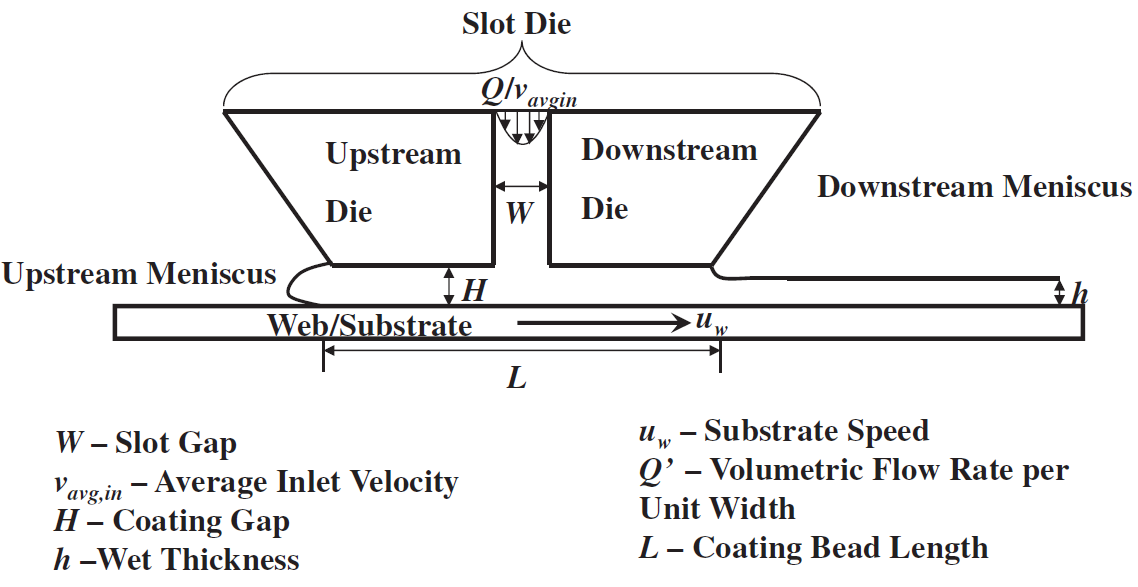Polymer mirco/nano particle composite membranes and films have multiple applications ranging from water filtration to catalysts to paints. The particle distributions within these membranes can have critical importance to their properties and performance.
Slot-die extrusion is one industrial scale process that is commonly used to manufacture films. The benefit of this method is that the film thickness is a function only of the mass flow rate of the solution to be coated and the substrate velocity on to which it is coated. The die geometry and material properties determine the range of velocities which defect free film can be manufactured and the main thrust of research is usually at improving the maximum speed of production.

The particle distribution in composite membranes is effected by the die geometry and the highest coating speeds might not lead to the ideal membranes structure. As the gap height between the die and the substrate varies, the velocity profile of the fluid under the die changes and the resulting fluid dynamic forces cause the particles to migrate. Utilizing this can allow for the tailoring of the particle distribution within the membrane.
Casting is only the first step in the manufacturing process. After casting the wet film must be cured into a solid. Depending on the material this process can take several forms and the dynamics during this process can also effect the final particle locations. These influences are not as easily controlled as simple geometry changes during the casting process.
So how much influence does the geometry have on the final particle location? What is the link between the process and the final structure? Modeling the entire process from casting to curing is a complex proposition due to the multiscale nature (macro level fluid, micro level particle, and molecular level phase change dynamics). Experimentally there are an infinite number of settings at which we can create a given film thickness at. What can help solve this dilemma? Informatics!